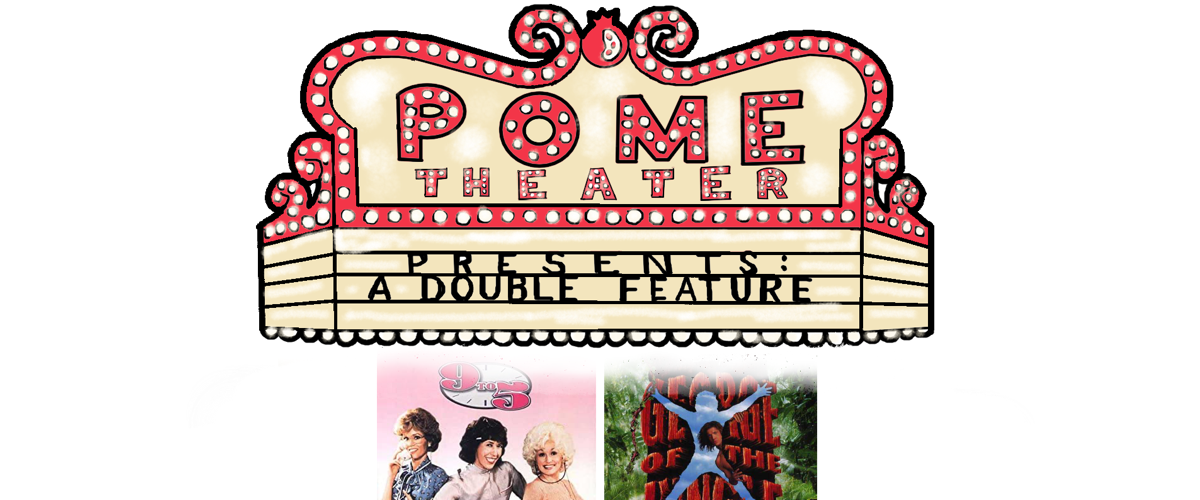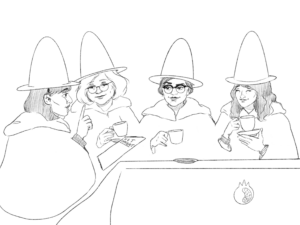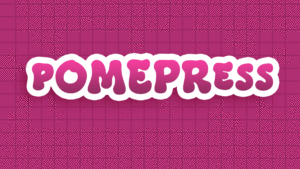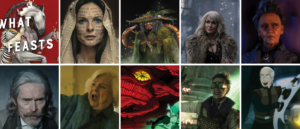In honor of Comrade Himbo—POMEpress’s latest project: a comics & illustration anthology all about dummy thicc anti-capitalists—we bring you yet another installment of a classic POMEsegment, the Double Feature!
This week:
9 to 5 — George of the Jungle
These movies are both Comrade and Himbo, to varying degrees. And by that, really, I mean that they are both earnestly imagining a better world, where the vulnerable are taken care of and alternative intelligences (street smarts, ~sensual~ intelligence, etc.) are recognized for their inherent value.
9 to 5
We open with the movie leaning more towards the Comrade of Comrade Himbo and the world’s foremost cinematic achievement on the subject of workplace solidarity: 9 to 5 (1980).
At its core, 9 to 5 is a movie about three women—Jane Fonda, Lily Tomlin, and Dolly Parton— who become friends by bonding over almost poisoning and then actually kidnapping their chauvinist boss. No one in the office really notices that the boss is gone because Dolly and Lily Tomlin were doing all his work anyway. But they use his confinement to make a few little workplace changes: on-site childcare, personalized workspaces, flexible hours, equal pay for men and women. You know, things that people are still fighting for?
This movie is a classic for many reasons: it’s Dolly Parton’s film debut; the points it makes about rigid working conditions and the behavior of white men with power have sadly remained relevant; it’s an absolute fever dream to watch.
9 to 5 doesn’t exactly follow a typical narrative structure—the momentum of the murder/kidnapping plot is regularly interrupted and slowed down by extended fantasy sequences (sometimes animated, sometimes not—very much a precursor to the opening scene of The Beautician and the Beast, another PEAK Comrade Himbo movie). These sequences, which are infectiously delightful but also strange and disorienting, are themselves a structural rebellion against the storytelling format popularized and prioritized by our male-dominated Western filmmaking tradition. But they’re the most Himbo rebellion ever—they’re earnest and fun and just whole-heartedly dedicated to the authentic expression of emotional truth.
This is a movie with Big Feelings and it prioritizes those feelings at every turn: in the dialogue, in the plot, in the whole structure! Like, yes, maybe their weed-fueled fantasies about killing their boss don’t actually happen, but the line is blurred to such an extent and the fantasies are given so much screentime because the feelings of these characters are just as important as the actions they take!
And if you like that, you’re going to love the next movie:
George of the Jungle
George of the Jungle (1997) was produced by Disney, and is therefore just about as Patriarchal Capitalist Establishment as you can get. And yet. Sometimes Disney does this thing, where they make something beautiful and perfect so they can hide their bad deeds behind it (see also: Emilio Estevez getting wrongfully fired from college hockey when all he did was pay a student athlete in Mighty Ducks: Game Changers, while, at the same time, Disney owns ESPN, which profits off of the exploitation of student athletes more than just about any other institution besides the schools themselves). But look: It’s 2021—we can love a piece of media and still be critical of it.
And I do love George of the Jungle. It’s basically just Brendan Frasier as an off-brand Tarzan, but at the same time, it’s so much more. It’s class critique, gender critique, animal rights critique—all rolled into one very small loincloth.
True to the comic that inspired it, the narrator of George of the Jungle is a major character and was, for some of us, the first introduction we had to breaking the 4th wall in cinema. And the choice to bring the narrator-as-character into this movie really speaks to the film’s commitment to community—just as George and Ursula merge their communities and reorient the values of those communities around kindness and acceptance, so too does the incorporation of the narrator as character, as an active participant, speak to the communal act of storytelling!
Like 9 to 5, George of the Jungle makes smart structural, narrative decisions that further represent the larger points made by the text: that people traditionally overlooked by society have value; that you cannot trust a rich man; that emotional intelligence, and ~sensual~ intelligence, specifically, is a more attractive quality than having a trust fund.
George of the Jungle encourages all of us to acknowledge our collective humanity and to recognize our place in nature. But also! It’s very funny! Leslie Mann is in it! And Holland Taylor! You really cannot go wrong!
Ultimately, these movies are just so much fun! They remind us that being a good person and striving for justice are things that you can do with joy and good humor. And honestly, that’s exactly the energy that we here at POME and all of our immensely talented contributors have brought to Comrade Himbo! If you’ve enjoyed this double feature, head over to the Kickstarter page for more of these kind and hunky vibes!









